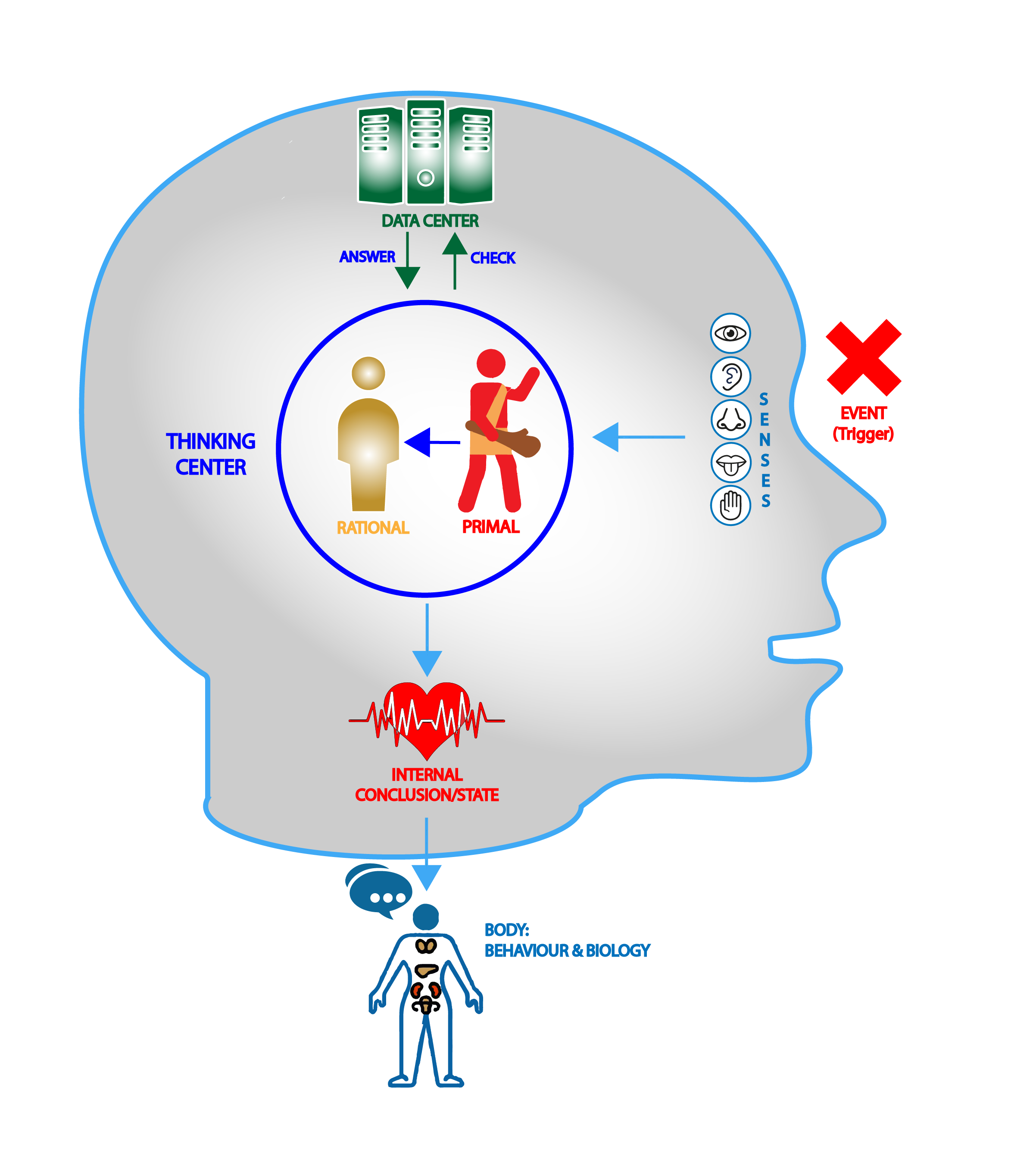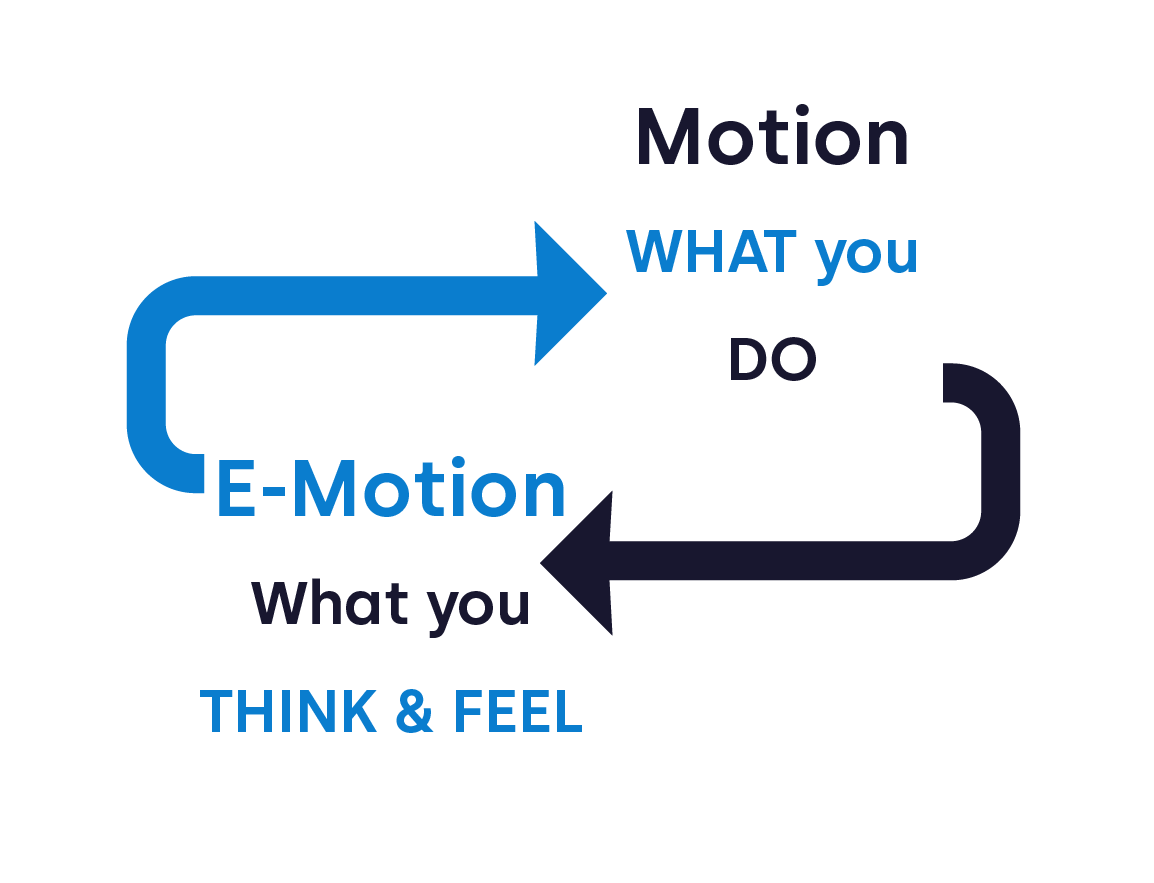The database – What will you get from this article?
Is this FOR you?
By the end of this article, you will have :
☑️ Raised further your self-awareness
☑️ Picked up the fundamental knowledge for self-management
☑️ Improved your understanding of HOW your mind works
☑️ Realised HOW your beliefs, behaviours, and everything else that you know, is running YOU & your brain
☑️ Developed a more flexible attitude towards what you know and do
Is this like YOU?
� Would it be useful for you to know the UNCONSCIOUS process behind your EXISTING behaviours, beliefs, and everything else that you know & do?
Including the most deeply UNCONSCIOUS ones?
� Have you ever wanted to expand your perspective about what you can do?
What will you learn?
You will learn about your “DATABASE”, specifically:
– What it is
– What it does for you
– How it impacts you in your day-to-day activities and, even how it directs your life
Reminder – Why learn this?
With this knowledge, you would be in an improved position to:
✔ Increase your awareness: Self & social awareness
✔ Gear yourself toward the impact & results you want
✔ Pave the way to increase your well-being & self-confidence
✔ Manage any unwanted thoughts or behaviour steeming from your PRIMAL (Emotional) mind
E-motion brings motion !
Recap previous article – Your DATABASE & your brain architecture
The DATABASE represents your temporal lobe.
Your temporal lobe is your memory function, for simplicity purposes, we can refer to it as your DATABASE.
As highlighted in this article, it is another KEY part of your brain architecture, you can read it to understand what you are made of.
The DATABASE is your memory function
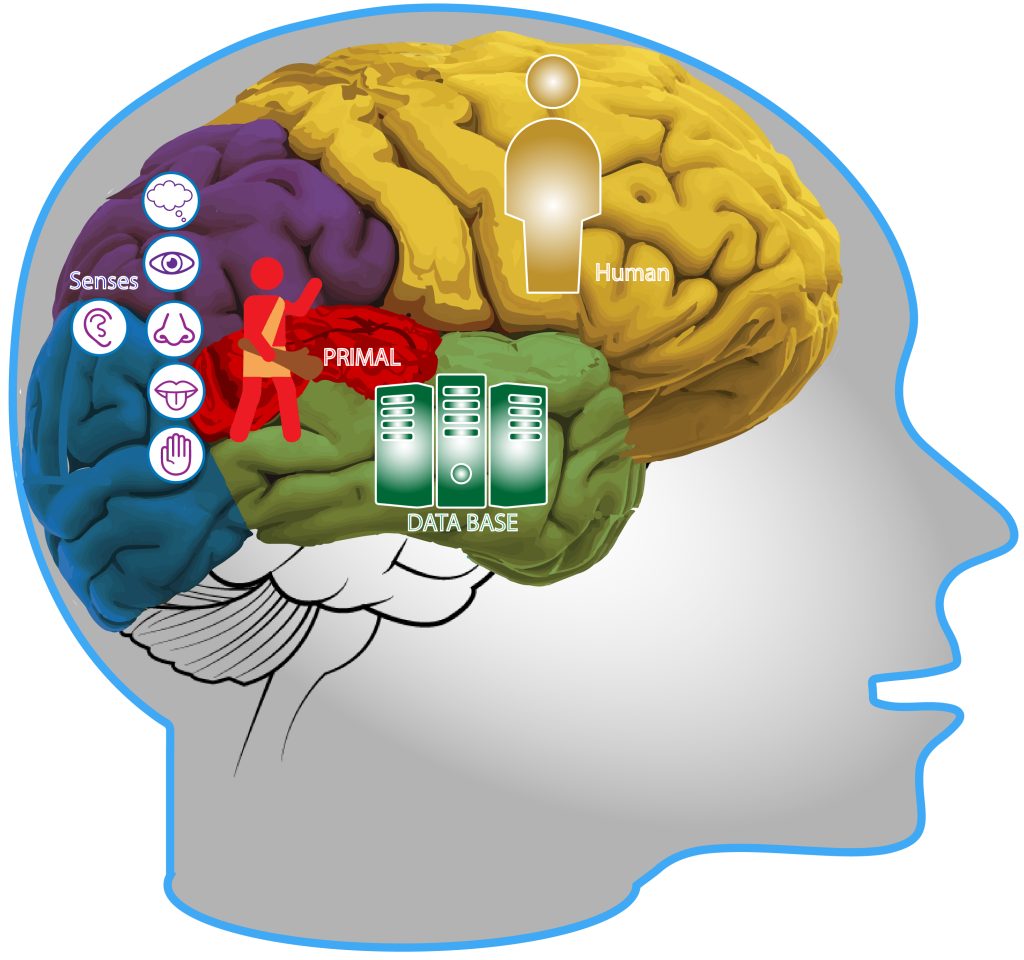
As the DATABASE is your memory function, if I tell you:
–“Ice cream”
– “Hell”
– “Tomato”
– “Door”
– “Sex”
– “Clouds”
❓Is there a picture, a sound, or a feeling in your mind?❓
→ This is your DATABASE running & in full effect!
You will fully understand this phenomenon, this is once you discover your DATABASE’s main functions.
The DATABASE – Main functions
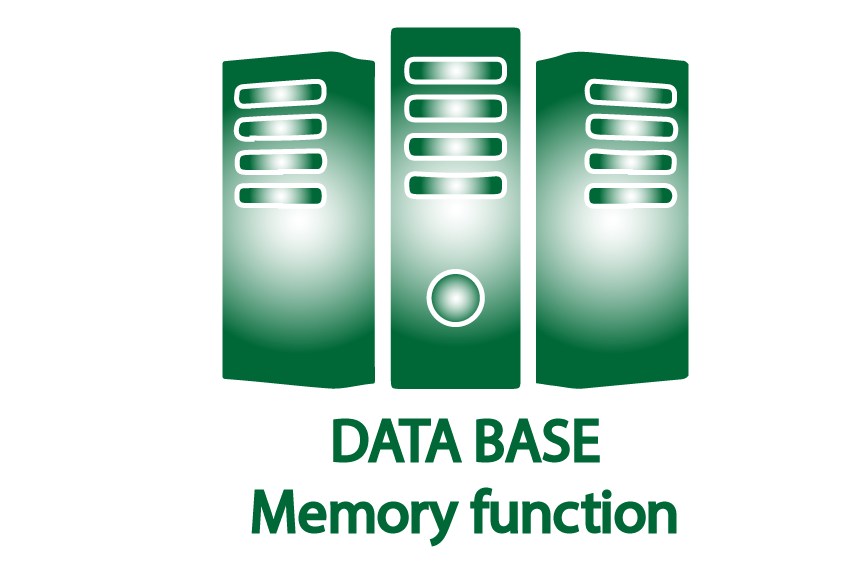
✔ Data host & data reference
It is the depository of “what you know“; it makes sense of the world for you.
Example: If I tell you “Chocolate – ice cream – on a – waffle cone”
You have, more than likely, a picture in your mind’s eye, this is because:
– You have an image for each word in your mind.
– Each image has a word linked to it in the English language.
→ Someone who doesn’t know English wouldn’t be able to make sense of these words, and not be able to “see” those words in their mind’s eye.
✔ Data checking
Provide data checking about your surroundings (Words, sounds, images, actions)
Example: The story of the man with a gun, the medieval man & you
(A bit weird I know, you will quickly understand its purpose)
– You:
You are walking in the street, and all of a sudden a man pops up and points a gun at you. At that moment, you KNOW that this gun is harmful!
– The medieval man:
This man just came out of a time warp, and the gunman sees him and points his gun at him, that medieval man would NOT KNOW immediately that this “thing” that the gunman is holding can kill him.

→ This shows you how a person’s knowledge differs, according to what is in that person’s DATABASE.
✔ Automatic behavioural response
Act immediately & automatically and without conscious thinking.
Example #1 of automatic behavioural response:
The man with a gun, the medieval man and you are back!
– You:
The gunman points that gun back at you, and as fast as you see that, you automatically KNOW what to do next: you RUN!
– The medieval man:
The gunman points his gun back at him, the medieval man instead would look, be confused, maybe analyse, talk or fight the gunman, either way, he would NOT KNOW what to do …

Example #2 of automatic behavioural response:
Your ability to:
– Write
– Walk
– Eat with your right or left hand (Try eating with your opposite hand for your brain to go overdrive)
– Drive
– Speak languages
– Etc …
These are your automatic behavioural responses, once learned and mastered, these behaviours are stored in your DATABASE. It is done by you automatically & unconsciously.

Your DATABASE is your host & reference for data.
It helps you with making sense of things & it is in charge of your automatic behaviours
What is the DATA in the DATABASE?
Your DATABASE is split into content data and non-content data.
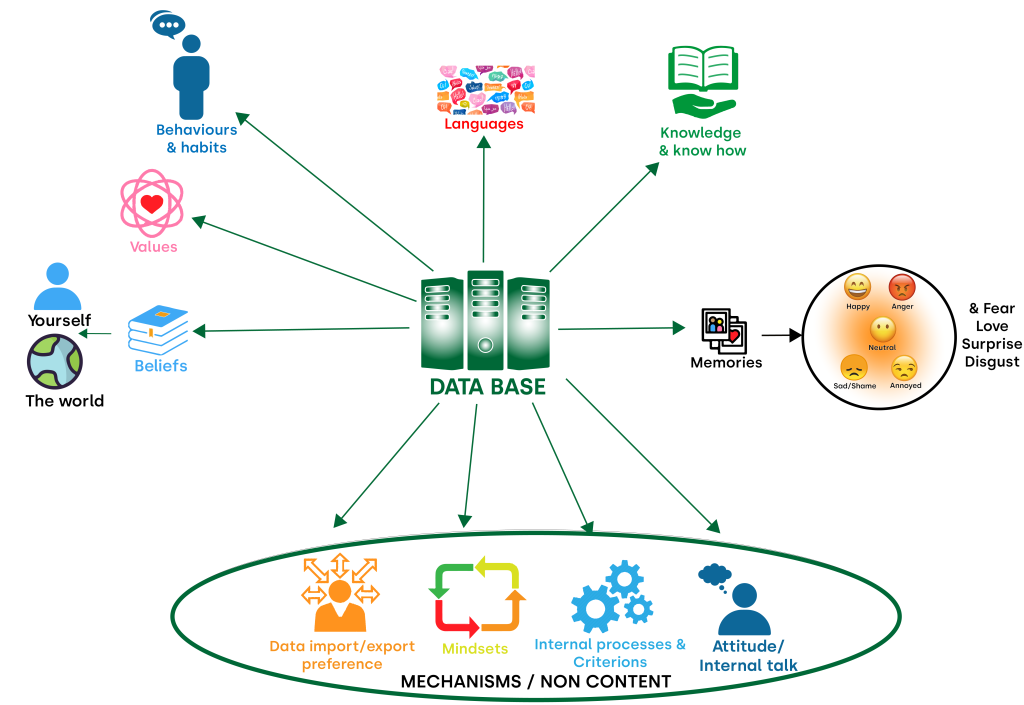
Content-data (WHAT you think about)
– Beliefs
– Values
– Behaviours & habits
– Languages
– Knowledge
– Know-how
– Memories
NON-Content data (HOW you think about it)
– Mindsets
– Internal processes
– Data import preferences
– Export preferences
– Attitude
Your DATABASE is split into WHAT you think about & HOW you think about it.
Content-data
(WHAT you think about)
- Beliefs
This is what you believe to be TRUE and CORRECT.
Beliefs can be about you, your skillset, the world, people, etc …
Examples – Beliefs:
“I suck at math”
“People who come from xxx are bad/good people”
“I am the best thing since sliced bread”
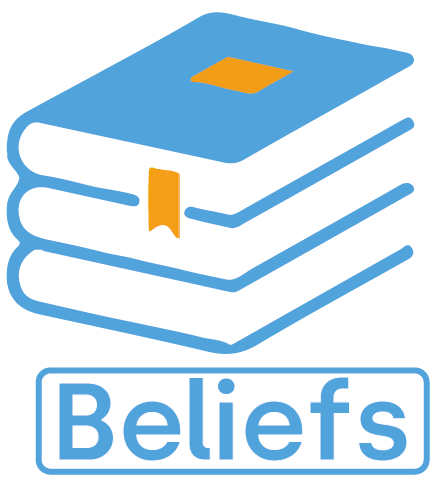
A practical example: Narcissism
You may have met people with narcissistic tendencies.
This term is quite popular, and often misused, let’s use the definition according to the DSM-5 (The Diagnostic and Statistical Manual of Mental Disorders, Fifth Edition).
Narcissistic personality is a disorder (NPD) characterised by:
– Feelings of self-importance (That’s a belief)
– Self-perception of being unique & superior (That’s a belief)
– Associating with high-status people and institutions (That’s a behaviour)
– The above behaviours are repetitive & over a long period
- Values
What you believe to be IMPORTANT & RIGHT.
Examples – Values:
“Freedom”
“Equality”
“Family”
“Peace”
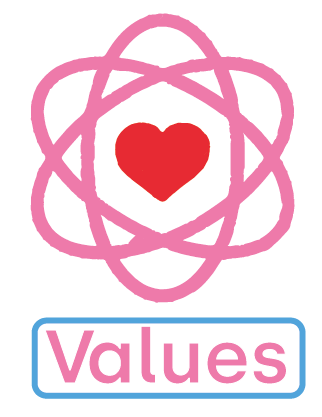
→ Your values drive:
– How you live your life
– How you make decisions
– How you assess a situation
Examples – Values assisting with your evaluation of a situation
Imagine a man that:
– Goes to the gym 7 times a week
– Eats ONLY a balanced diet, no junk food
– Weighs himself EVERY MORNING.
→ What do you think about this?
You might think “That’s too much, that would be too much for me“.
Maybe that person has “Health” in his value system, and holding high.
Maybe “Health” is also a part of your value system, yet possibly not as high in your value hierarchy, maybe “Family” or “Commitment” or “Fun” come first and these might be more important for you.
- Behaviours & habits
Your behaviours are WHAT you do for fun, WHAT you eat, your interests…, these can be healthy & unhealthy behaviours.
Your DATABASE contains your coping mechanism: WHAT you do under stress, WHAT you do when you are angry, sad, etc…
It stores the habits you formed, these are your repetitive behaviours.
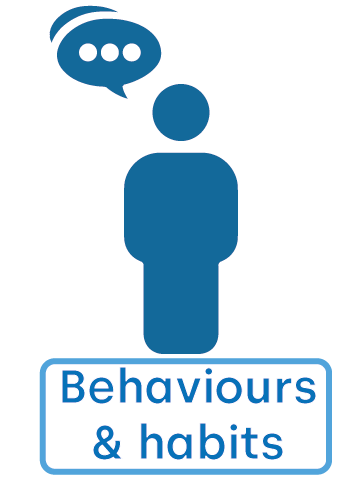
- Languages
The languages you know.

⚠️Note:
Languages are a gateway to some of your values & your emotional needs.
Examples: “Thank god“, “Praise the lord“, “Shalom”, “Namaste” and “Salam”
→ These words can reach the values for “Peace/Spirituality” & of that “Religion name“.
Using these words can also serve the emotional need for “belonging/connection” and “Safety/familiarity” as listed in this article about your PRIMAL (emotional) mind needs.
⚠️ Note:
Using languages and responding to people’s PRIMAL needs is a part of report building and influence, this is articulated at length in the “Social intelligence” workshop.
- Knowledge & know-how
This is what you know about science, geography, arts, cooking, fashion …
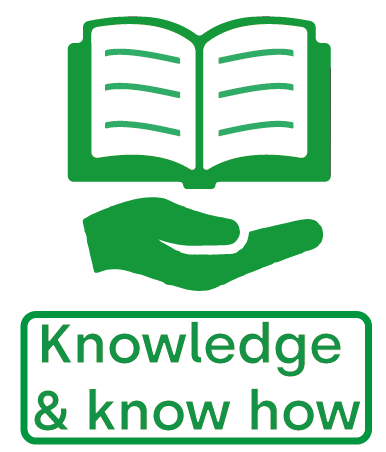
- Memories
Your remembered & forgotten/unconscious memories: your happy, sad/traumatic… memories
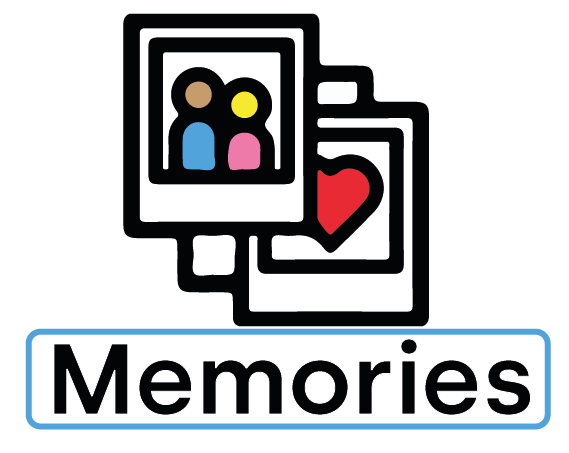
Non-content data
(HOW you think about it)
The following are content-free, these are HOW you manage information.
- Mindsets
These are HOW you frame your thinking, it drives your understanding/conclusion on a situation.
Examples
– No pain, no gain
– There is no failure, only feedback
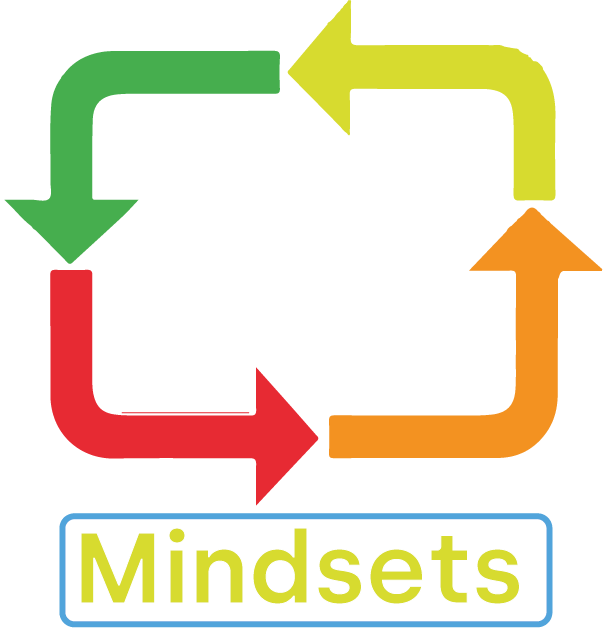
- Internal processes
This is HOW you do something: its criteria & steps.
This is how you trust, like, love, hate, seduce, get motivated, buy, sell… and everything else!
The criteria & steps of your internal processes are often UNCONSCIOUS.
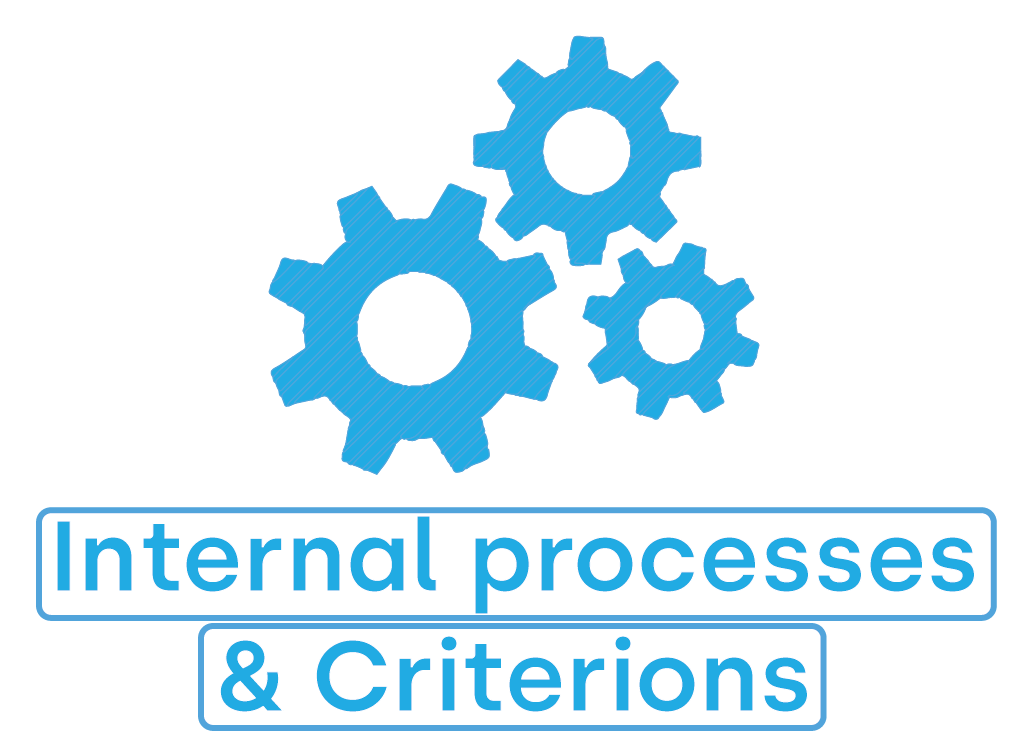
Example with TRUST
– How do you trust someone?
– What is needed for you to trust: Time, proof?
– What type of proof? How often? For how long?
– What has to happen first for you to trust? And then what else?
– If you were to think further about how you trust, in what order and what sequence?
– What are the necessary steps for you to trust?

- Data IMPORT preferences
This is HOW you PREFER consuming outside-world information.
Examples with learning
Do you prefer learning by :
– Listening to podcasts?
– Watching videos?
– Speaking to someone?
– Reading blog articles etc …
- Data EXPORT preferences
This is HOW you project information back to the world.
Examples
A person can be more an:
– Extrovert or introvert or ambivert?
– Are you more of a thinker or a feeler? Meaning do you tend to be cold-minded or hot-headed?
– Planner/Flexible:
Do you prefer to plan and know in advance or to go with the flow?
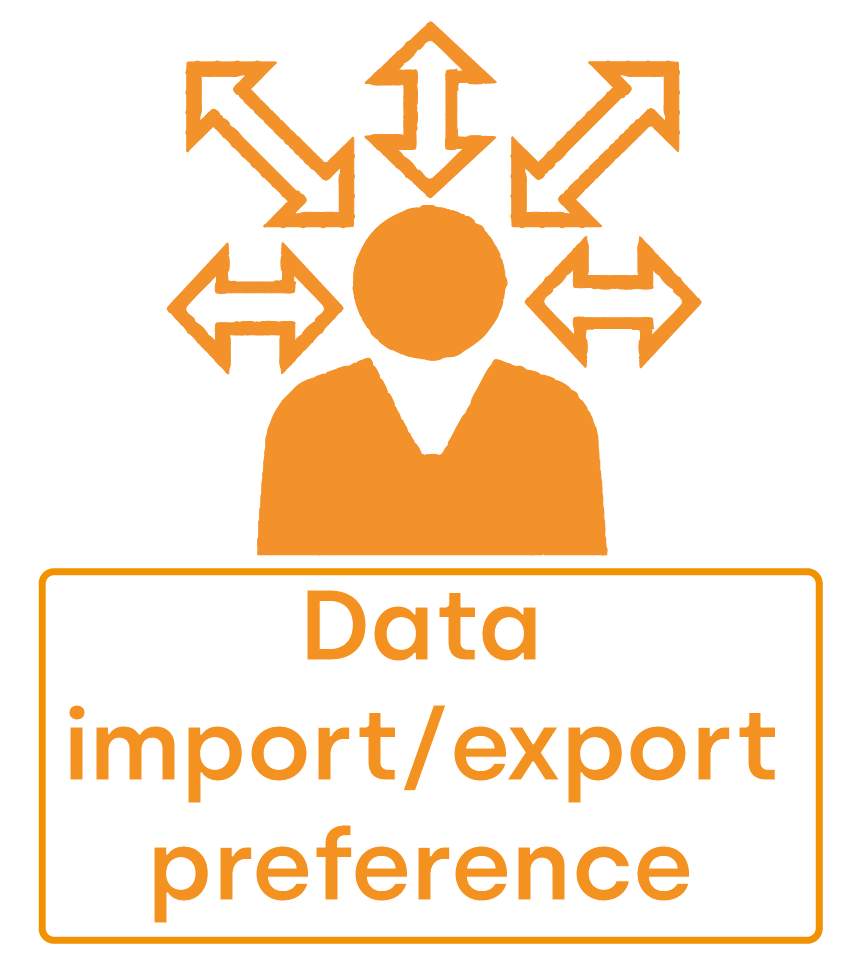
- Attitude/Internal talk
Attitude refers to the internal talk used, specifically its tone (Critical, supportive …), words and language and the words used, this has a tremendous impact on how someone feels.
Example:
Getting upset in a foreign language vs. in your mother tongue, notice how it is easier to be emotional in your mother tongue.
⚠️ Note:
This internal voice can sound just like the voice of one of your caregivers: parents, other family members, or teachers,… It can also be similar to any other significant person around you while you were growing up.
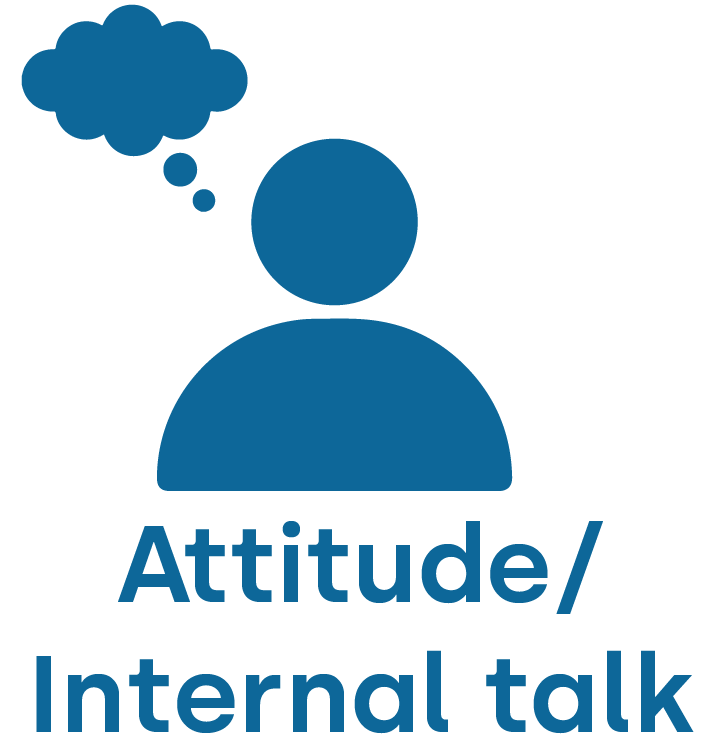
⚡ Being consciously aware of your “DATA” is a building block of self-awareness
⚡ When you revisit its “content”, you can increase your:
✓ Well-being
✓ Confidence
✓ Performance/productivity
✓ Let go of traumas
Enjoyed this article & curious to take it to the next level?
Realise that this article is an extract from the fundamentals of the Calm & Stress Management, Social Intelligence & Emotional Intelligence workshops.
These workshops are transformative blends of relaxation, mind management & communication tools & techniques.
Designed to release your best, these workshops will deliver you the methods to :
✔ Become more relaxed & reduce your stress
✔ Be in charge of your emotions & increase your well-being
✔ Develop your leadership & influence
→ For any questions about these workshops, you can schedule your FREE discovery call to find out more.
Up until next time, go learn & go RELEASE YOUR BEST !!!






